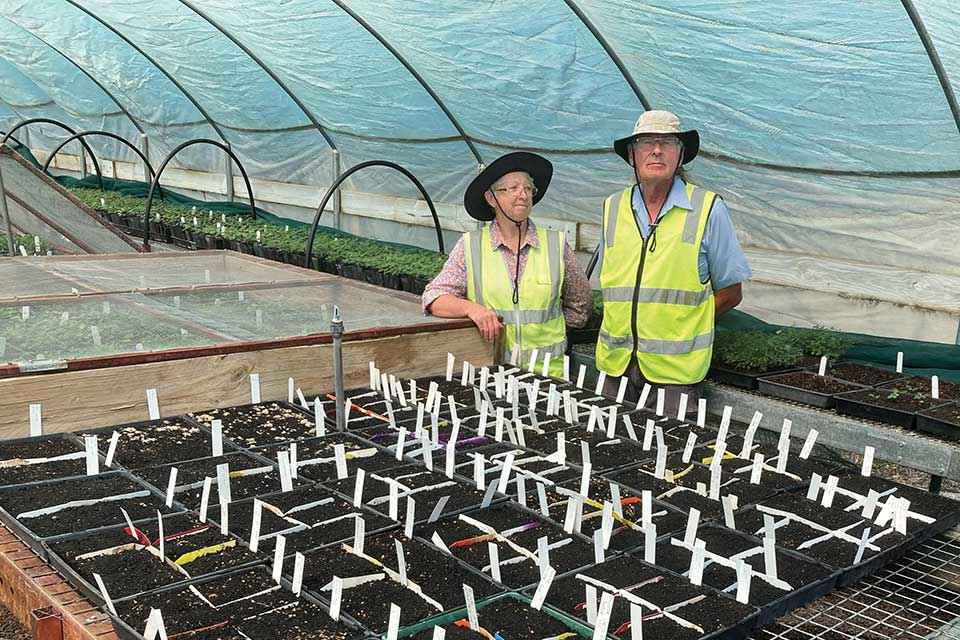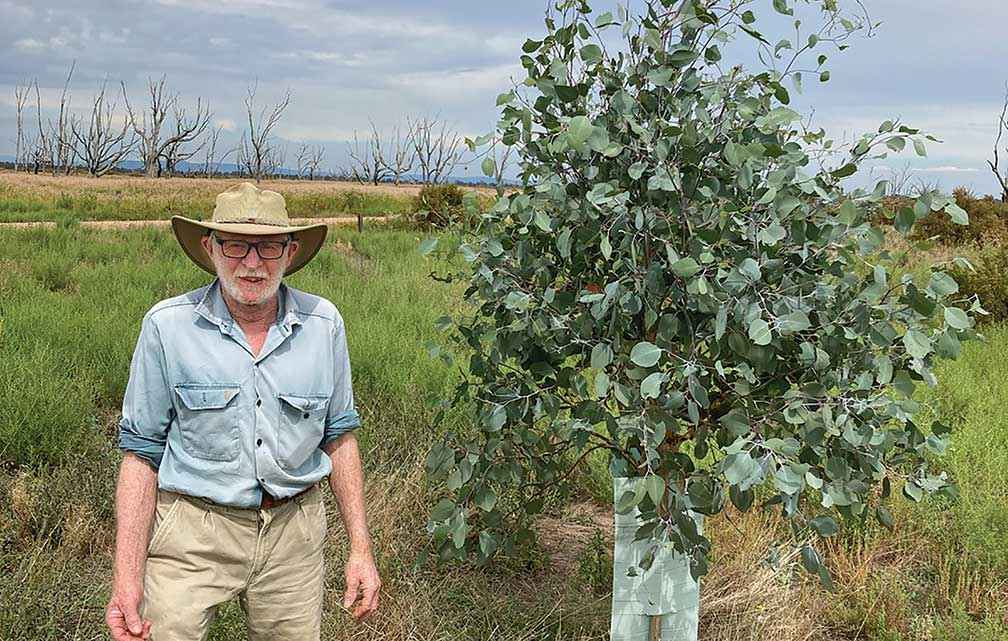Victorian Landcare Magazine - Spring 2024, Issue 88

The regent honeyeater is the icon of the temperate woodland bird community that has been drastically declining around Lurg, Glenrowan, and Benalla in northeast Victoria – as well as throughout its entire range in southeastern Australia – for decades.
The Regent Honeyeater Project (RHP) was established in the early 1990s to address this decline by focusing on landscape scale connectivity, fencing, enhancing remnant habitat and planting new corridors.
The project prioritises fragmentation caused by clearing, initially working in box/ironbark forests, and more recently including grey box woodlands and the Winton Wetlands Reserve.
Mollyulah/Tatong Tree and Land Protection Group supported the RHP when it first began and before it became a stand-alone association with a volunteer committee of management. Ray Thomas was our enthusiastic coordinator of the RHP for more than 20 years. Timely funding from the Wettenhall Environment Trust and later corporate sponsorship from Exetel enabled RHP to continue through some lean times.
In 2007 RHP achieved tax deductibility status under the Register of Environmental Organisations, and in 2022 we were granted charitable status through the Australian Charities and Not-for-profits Commission.

Above: Local Benalla volunteer Charlie Corser next to a four-year-old-white box planted by RHP in Winton Wetlands Reserve.
RHP has always worked with landholders and volunteers of all ages. School students and volunteers are involved in our plant nursery where up to 40,000 trees and shrubs are grown each year – helping us to control the costs of revegetation work. Recently more than 10,000 lilies and herbaceous plants from hundreds of local provenances have been grown at the nursery and planted out.
In its 25 years of operating RHP has completed more than 2460 hectares of restoration and revegetation, grown nearly 740,000 plants and planted them in more than 660 sites, erected more than 300 kilometres of fencing and constructed a 4.5 hectare seed orchard. Along the way we have engaged with 41,000 volunteers.
Over the past five years RHP has become a provider of revegetation services to various organisations including Birdlife Australia, Goulburn Broken CMA, Trust for Nature, and Winton Assets (solar farm), to name a few. While initially this move was challenging and required much effort to become compliant with numerous policy and procedure requirements it has afforded more long-term financial security.
Our annual surveys show numbers of grey-crowned babblers have steadily improved, often moving into and nesting in four-year-old revegetation established by RHP.
Sadly, numbers of regent honeyeaters continue to decline everywhere and are now rarely seen. The last recorded sighting in our area at Greta West was in 2020, but our annual surveys show numbers of grey-crowned babblers have steadily improved, often moving into and nesting in four-year-old revegetation established by RHP.
Regular inspection of over 400 nest boxes confirms that territories used by squirrel gliders and brush-tailed phascogales has also increased.
In 2009 we obtained a permit to thin a section of box/ironbark trees at Greta West that had mass germinated after the 1952 bushfires in the region. The trees were then 57 years old and in densities of more than 1000 per hectare. Nothing else was growing at the site. The trees were only about five centimetres in diameter and didn’t flower or produce nectar.
The permit allowed for removal of 70 per cent of the trees. A control site was established and transects recorded. Regular monitoring has shown an increase in tree growth in the thinned areas, as well as more ground layer plants and orchids.
This tree removal exercise demonstrated that we should have thinned 90 per cent of the trees, and not evenly spaced, but in clumps. Landholders should be cautious with local vegetation removal restrictions, as well as being aware that thinning too quickly can lead to greater storm damage due to the time it takes for the trees to develop stronger root systems.
Our current tree planting density is about 50 trees per hectare, with a maximum of 30 eucalypts per hectare, often clumped in groups of three or four. More trees are then planted if needed. We plant indigenous species but with a bias towards high nectar producing trees and a percentage of climate matched genetics from areas in western Victoria, north of the Murray River and well into NSW.
The near future will see us planting new trees at new sites and removing many trees from earlier plantings, so that each tree can function and have the space and moisture to become a resource for insects, birds, and animals.
Ecological thinning is hard work, especially when eucalypt trees want to re-sprout, which can require chemical control. At our Demonstration Thinning Site we have been testing a range of densities and methods including ring barking.
At a recent event a group of local landholders committed to revegetation, shared stories about their ancestors ring barking trees. It sounds like a backwards step, but if we want trees to express their true potential there is no point in planting them too densely, or not managing the numbers from mass germination events. For two hundred years we will be leaving them locked in a struggle for survival when the species that need them are facing extinction now.
As Kermit the frog said, ‘It’s not easy being green.’
Andie Guerin is RHP Coordinator. For more information email andie@regenthoneyeater.org.au or go to www.regenthoneyeater.org.au